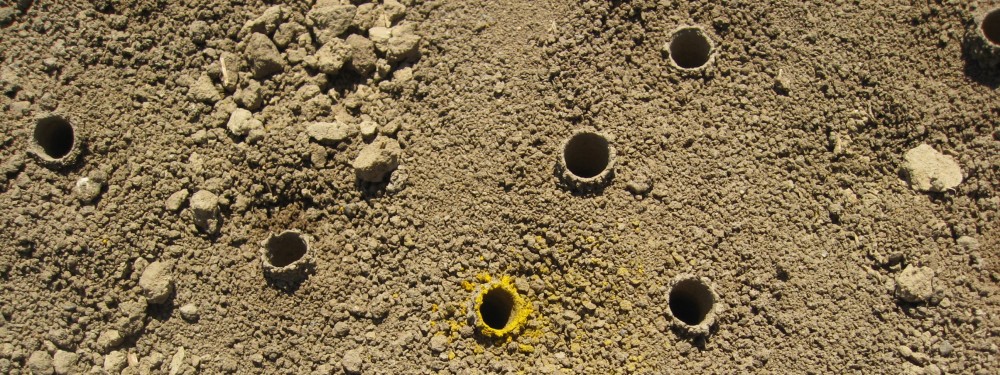If you are considering adding wildflowers to your hedgerow (or even your parking strip) new work out of UC Davis suggests that you might not need to add as many seeds as you think to achieve lots of blooms that benefit wild pollinators. Exciting news because it means you can save money while still attracting bees!
The research team planted 3 different densities of a mix of native forbs (herbaceous, annual or perennial plants). They found that the ratio of different plant species to one another had the strongest effects, with one species, gumplant Grindelia camporum, dominating the mixes. Gumplant blooms in the late summer, when most other plants have senesced, making the blooms they provide highly valuable to late season pollinators. For a big early season bloom, the researchers found that chick lupine Lupinus densiflorus provided the highest coverage in their study plots.
Here is a list of the different plant species they used if you want to experiment, but adding more species might increase the overall cost of your planting. Be sure to mix-and-match different bloom periods and life-cycles.
For more detailed information, check out their article from the journal Restoration Ecology:
Wilkerson et al. 2014. Diminishing returns from higher density resotration seedings suggests trade-offs in pollinator seed mixes.

